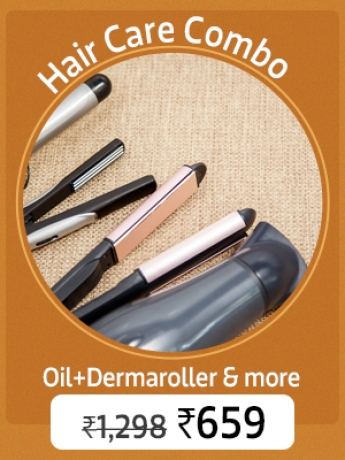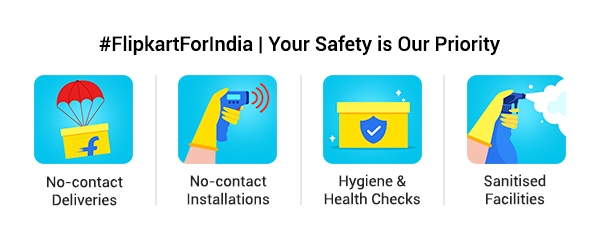Materials and Instruments For Dental Clinic Setup
Hello Everyone, In this post I am going to share list of materials and instruments required for new dental clinic setup. The list of materials and instruments will be according to Department wise. So, it is very easy to categorize and remember.
Kindle Note that it is not necessary to buy all these stuff. You can choose according to your practice. I will share premium and their alternative at cheaper price for starting or those clinicians practicing in rural area.
So, Let's Get Started..........
Starting with......
Disposable Items
1) Examination Gloves
You should have both latex and Non-latex gloves. I know Non-latex gloves are costly but you can use only in patients allergic to latex and during handling of putty impression material.
|
Buy From Amazon |
2) Face Mask
You should have face masks either elastic or loop. Due to Covid 19, Now you have to buy N95 or Premium Face masks and face Shields.
Surgical Face Masks
|
Buy From Amazon |
N95 Face Masks
|
Buy From Amazon |
3) Suction Tips
Suction Tips are of two types 1) With Copper Wire 2) Without Copper Wire. Without copper wire are cheaper and easy to bend than copper wire.
Copper Wired Suction Tips
|
Buy From Amazon |
Without Copper Wire Suction Tips
|
Buy From Amazon |
4) Disposable Glasses
Simple Disposable Glasses For Patients.
|
Buy From Amazon |
5) Surgical Head Cap
Head Cap are necessary for Doctors and Patients during surgical procedures to protect from spatters and blood. You can either have readymade surgical caps or you can Stitch from green cloth. I suggest you to stitch caps because they can be reused after washing and autoclaving.
|
Buy From Amazon |
6) Patient Bibs
These bibs are aesthetically pleasing and keep spills and fluids off of your patient during treatments such as cleaning, teeth whitening, and others. The material is 2 layers of tissue with 1 layer of plastic for waterproofing and designed to resist tears better than other thin dental bibs.
Again I will suggest you to Stitch Patient Drapes and Reuse Them. Maximum 5 Patient drape would be sufficient.
|
Buy From Amazon |
7) Tray Cloth
You should have Tray Cloth to Cover dental chair tray during treatment. You can stitch tray cloth also. Maximum 10 tray clothes would be sufficient.
|
Buy From Amazon |
8) Disposable Glass Holder
|
Buy From Amazon |
Diagnostic Items
1) PMT Set
There are various types of Mouth Mirror for example- Indian Mouth Mirror, GDC and API Mouth Mirror, Zirc Mouth Mirror, Magnifying Mirror.
You should have combination of all the mirror and minimum 15 sets required for starting.
Zirc Mouth Mirror
They are the best Mouth Mirror I have ever seen. They will show you crystal clear magnifying image. I personally feel you should have these Zirc mirror. I have set of 12 mirrors. They are costly and trust me you won't regret it.
· 2. Surface Debris White Lesions
· Surface debris white lesions are related to the death of the epithelial tissue. They are often painful. They could be caused by a burn from hot food, hot drinks, or chemicals. A fibrin clot is another type of surface debris white lesion, and it results from a buildup of fibrin.
· 3. White Lesions Due to Subepithelial Change
- · White lesions caused by subepithelial changes have an epithelial layer that looks normal, but changes in the connective tissue partly hide the blood vessels and make the area look white, yellow or tan. Such lesions have a smooth, almost translucent surface.
- They do not rub off and are not painful. In newborns, a gingival cyst may be found on the gums or on the hard palate though they usually resolve quickly after birth.
- Fordyce granules look like yellow clusters, and they are often found on the buccal mucosa and lip. They are overgrown sebaceous glands and require no treatment.
- Scars of the oral mucosa could also look white. A history of trauma to the area is diagnostic of subepithelial fibrosis.
True or False - Oral mucosal lesions involve the epithelium and sometimes the connective tissue that is adjacent to the epithelium.
True
Which of the following are risk factors for oral mucosal lesions? Choose three answers.
Sexually transmitted infectionsPoor oral hygiene High blood pressureDisorders of the immune system
· 4. Pigmented Surface Lesions of Oral Mucosa
- · Physical Properties of Pigmented Surface Lesions
Pigmented surface lesions of oral mucosa take on a brown, blue, or black color. They are often diffuse and have multiple focal points, but they may also be in just one spot with one lesion. Many of these lesions are hereditary and simply represent a collection of excess pigmentation and are of no concern.
Risk Factors in Pregnancy
During pregnancy, an increase in
melanin production may cause a darkened appearance that slowly fades after
childbirth.
Causes of Pigmeneted Surface Lesions
Medications such as quinine for malaria also cause pigmented surface lesions. Exposure to tobacco, nicotine, lead, mercury, gold, arsenic, or bismuth may cause changes in pigmentation. The hereditary Peutz-Jeghers syndrome causes freckled lesions.
Hereditary Conditions Causing Pigmeneted Surface Lesions
People with polyostotic fibrous dysplasia might also develop brown to tan areas of the oral mucosa and other epithelial tissues throughout the body. Addison’s disease is another hereditary condition that may cause collections of pigment on the oral mucosa.
· 5. Localized Pigmented Surface Lesions of the Oral Mucosa
· Localized pigmented surface lesions of the oral mucosa are divided into four categories, based on their causes.
- · Intravascular blood lesions look dark red, purple, or blue and are caused by an increase in the size or number of blood vessels.
- Hemangiomas are overgrown arteries and veins that come together in a swollen area.
- A varix is a dilated vein, that looks blue or purple and usually blanches. If it is thrombosed, it will not blanch.
- Kaposi’s sarcoma is a malignant vascular neoplasm that looks purple and is associated with severe suppression of the immune system.
· 6. Extravascular Blood Lesions
· Extravascular blood lesions are caused by blood that leaks out of the blood vessels.
- · Ecchymosis is a bruise caused by trauma and is usually flat and red, purple, or blue.
- A purple or black lesion may be a hematoma, which is a pooling of blood in connective tissue.
- Petechiae are tiny red hemorrhages caused by trauma or infection.
· 7. Melanocytic Lesions
· Melanocytic lesions are a collection of melanin and look dark brown or black.
- · The first type is an ephelis, which is essentially a freckle. It is flat and brown or black and occurs in sun-exposed areas such as the lip.
- Another type is an oral melanotic macule which is caused by increased melanin production and often looks like melanoma. Excision is often recommended to confirm a diagnosis.
- Thirdly, a melanocytic nevus is a mole in the mouth and is often present since birth. They can become cancerous and should be completely excised.
- Lastly, Melanoma is a cancer of the melanin-producing cells. Although it is rare in the oral mucosa, it can occur. It grows in size over time and often has irregular borders and looks red, brown, black, blue or multicolored.
· 8. Tattoos
· A tattoo of the oral mucosa refers to the presence of foreign pigmented material in the epithelium. It is usually caused by phagocytes ingesting amalgam from dental fillings or graphite from pencils if someone had a habit of biting on their pencils.
Only rarely is an artistic tattoo found on the oral mucosa.
· 9. Vesicular-Ulcerated-Erythematous Surface Lesions of Oral Mucosa
· There are many causes of mucosal ulcers. No matter what the cause, ulcers in the mouth cause considerable discomfort.
Most ulcers start as blisters and then rupture. Small blisters or vesicles measure two to five millimeters in diameter and bullae measure greater than five millimeters. Some causes include lupus erythematosus and lichen planus.
· 10. Epidermolysis Bullosa
· Epidermolysis bullosa is a group of hereditary diseases that cause blisters and ulcers. They are more commonly found on the skin, but sometimes they develop on the oral mucosa. Most people have a family history of these blisters.
These conditions are often accompanied by scarring, decreased ability to open the mouth, and enamel defects.
· 11. Autoimmune Diseases
· Different autoimmune diseases trigger the wax and wane of blisters and ulcers in the mouth.
- · Patients may have blisters and ulcers in various stages of development. The blisters may come and go but are generally persistent or chronic.
- Pemphigus Vulgaris is an autoimmune disease of the stratified squamous epithelium.
- With mucous membrane pemphigoid, the immune system attacks fibers, leading to a separation of the epithelium and the closest layer of connective tissue, leading to blisters.
- Bullous pemphigoid is a similar but less severe autoimmune disease.
- Lupus erythematosus causes scaly purple lesions, painful ulcers, patches, and erosion. Injected corticosteroids help to control lesions caused by autoimmune diseases.
· 12. Idiopathic Diseases
· Idiopathic diseases have causes that are only minimally understood.
- · Aphthous Ulcers
Aphthous ulcers have a sudden onset and last for one to two weeks. They are associated with menstruation and often have a familial history. With erosive lichen planus, an immune system irregularity in the epithelium results in striated purple and white lesions and white ulcers that are often arranged in a pattern. If they ulcerate, they are painful.
Erytheme multiforme
Erythema multiforme is a large blister surrounded by rings of smaller blisters and ulcers. It is related to an overactive immune system response to medications or infections.
Medication-induced Mucositis
Medication-induced mucositis is chronic lesions that develop an indeterminate amount of time after taking a medication. Some people develop contact stomatitis after exposure to a mouth rinse, food, or flavoring agent; cinnamon is perhaps the most common offending agent. The symptoms tend to be similar to an allergic reaction and are characterized by blisters, swelling, and ulcerations.
Erythroplakia
Erythroplakia is an asymptomatic form of squamous cell carcinoma and requires excision and biopsy.
· 13. Viral Diseases
· A variety of viral diseases also cause oral mucosal lesions. They usually have an abrupt onset and multiple lesions present at the same time. Some patients may report systemic symptoms such as a fever, tiredness, swollen lymph nodes, or diarrhea.
- · Physical Properties of Viral Diseases that Trigger Vesicle Development
Viral diseases that trigger vesicle development often have a rapid rupture of the vesicles, which may or may not be apparent to the patient. Herpes simplex virus type 1 preferentially affects the oral mucosa and other areas above the waist.
Latent virions are present in the nerve endings throughout the patient’s lifespan, and outbreaks can occur at any time. Vesicles and ulcers can occur anywhere in the oral mucosa. This disease is common in children and adults of any age. Herpetic lesions resolve within one to two weeks without treatment.
Chickepox and shingles
Chickenpox and shingles are both caused by the varicella-zoster virus. Oral lesions caused by the chickenpox virus turn into vesicles and ulcers but are usually non-painful. With shingles, the vesicles and ulcers are painful, and the affected nerve might also trigger a toothache.
Herpangina
Herpangina is usually caused by Coxsackievirus A and causes systemic and oral symptoms. The lesions often develop on the soft palate and back of the throat. Coxsackievirus A or B also causes hand, foot, and mouth disease.
The lesions are associated with a sore throat. Epstein-Barr virus infections lead to infectious mononucleosis, which may trigger a variety of oral mucosal problems. These problems include lesions, petechiae, epithelial necrosis around the tonsils, and necrotizing gingivitis. The early stage of measles is also associated with oral lesions that are red and flat with white centers.
· 14. Candidosis
· Candidosis, or oral yeast infection, is associated with immune suppression or local factors and forms a thick white plaque on the oral mucosa (Mayo Clinic 2017). It presents in a variety of forms. Thrush, or pseudomembranous, has white plaques that rub off. It causes taste alterations, pain, and burning.
- ·Acute Atrophic Candidosis
Acute atrophic candidosis features red mucosa that is accompanied by pain and a burning sensation. With angular cheilitis, cracks, crusts, and pain are found between the lips. It can become chronic and cause the soft tissues to atrophy, which is painful. In chronic hyperplastic candidosis, a white thickening develops.
Median Rhomoboid Glossitis
Median rhomoboid glossitis causes tongue inflammation and patches around the papillae. The elderly may develop yeast infections under the dentures, causing pain.































Comments
Post a Comment